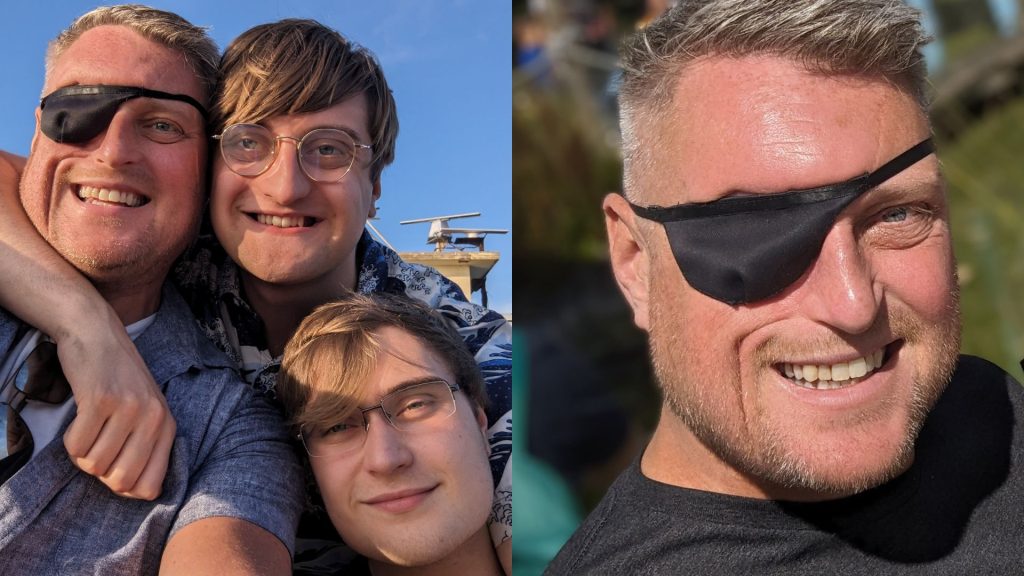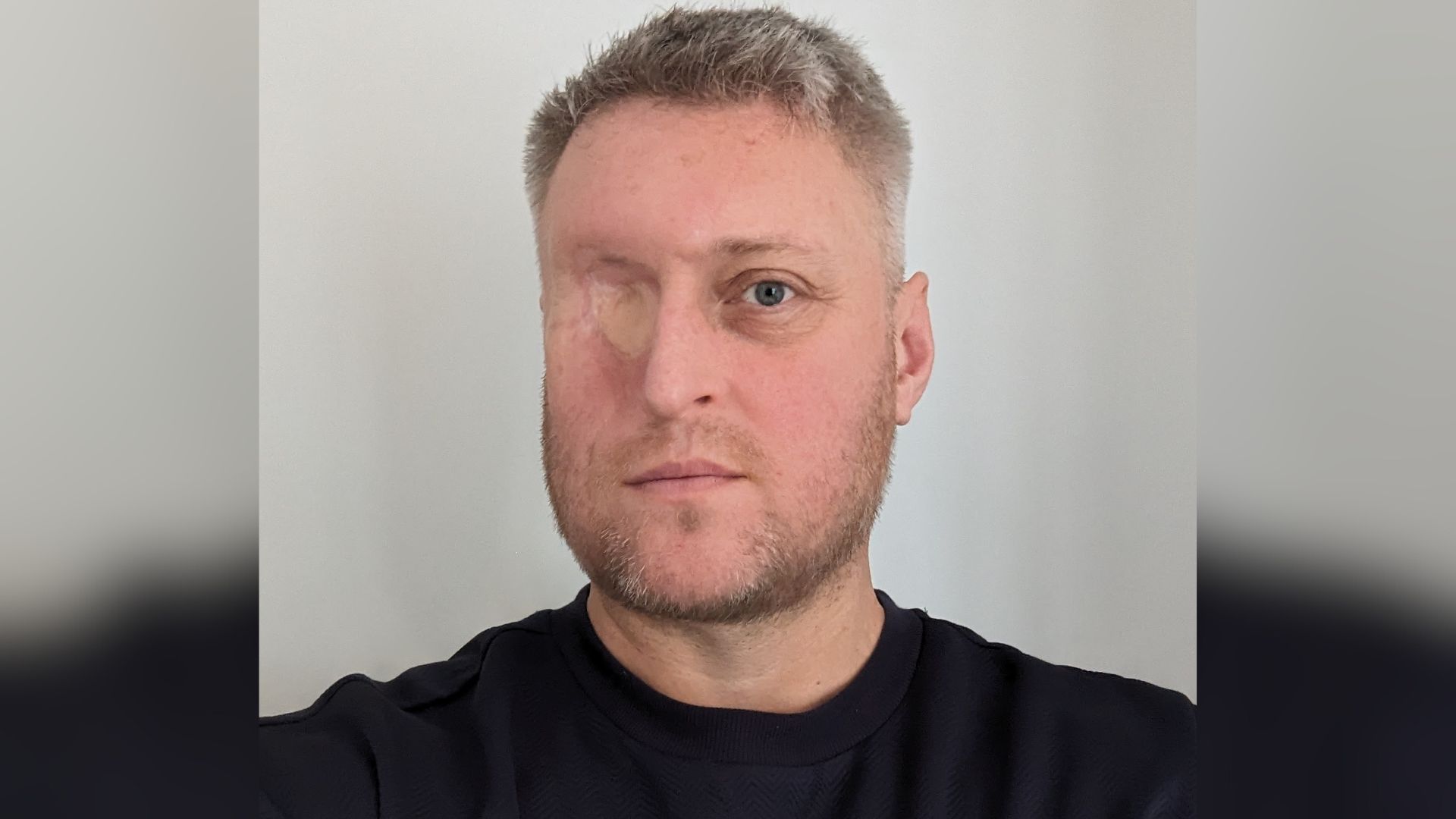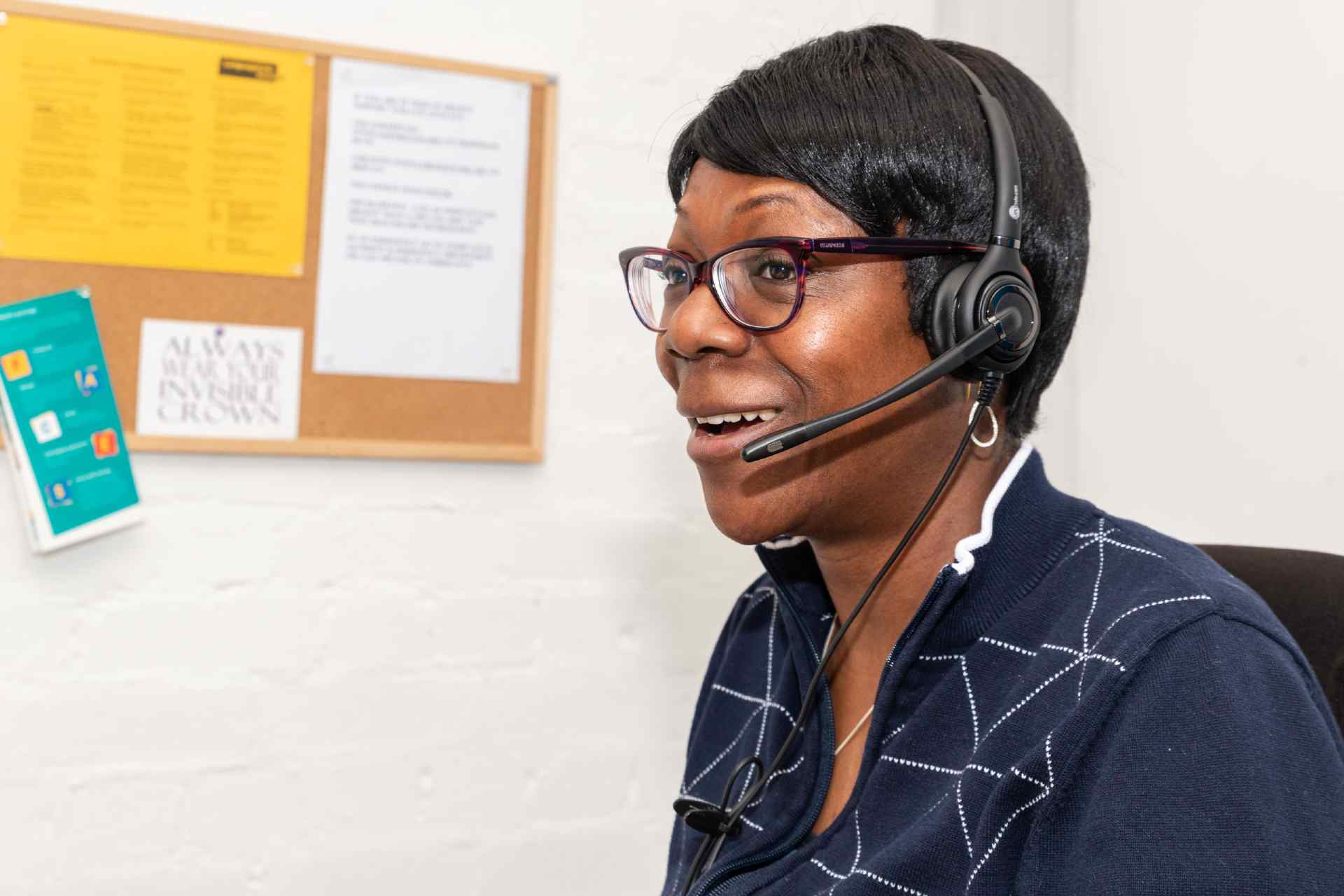In 2012, I had this persistent watery eye which wouldn’t go away. I was largely dismissed by GPs who gave me eye drops, but after six months of pain and plenty of tears I was eventually referred to an eye specialist.
The specialist didn’t know what was wrong, so they sent me for a scan. I had Googled my symptoms, and I was satisfied that it was a blocked tear duct, which had subsequently caused an eye infection.
So I was completely floored when I saw the scan results showing a satsuma-sized tumour growing inside my face. I assumed that this could be removed through my nose, but the only way to get it out was to remove my eye as well. It was stage four cancer, so it had to be taken out. There was no way around this. It was live or die.
I went under the knife roughly around June 2012. They sealed up the hole after removing my eye, but the stitches started coming undone. They basically said that there was nothing more to do about it, as all further treatment would have to be delayed until I finished my course of radiotherapy. Over the next six months, the hole just opened up until I had this huge cavity. You could look down through me to the back of my throat. It really was massive.
I had numerous surgeries to repair this, and I think my final operation was in 2015. Today, I don’t have any implants from prosthetics, and I don’t have any holes from failed surgery. It’s just me.

Daniel underwent his final surgery in 2015
Obviously, I had the cancer first so that was my primary concern for a long time but then I suddenly became aware that people were looking at me very differently. I became self-conscious to a degree I’d never experienced before in my life.
Even today, I don’t go out in public without my eye patch. People say to me, “Don’t wear the eye patch. You look great as you are. Just embrace it.” I present myself as body positive, so I’m a bit of a contradiction to myself, but I am human after all.
That said, I think I’m just one of those sorts of people who can put those feelings to one side. I know that people will stare, people will point, people will make pirate noises behind my back sometimes, but I’m not going to hide away from life.
It does upset me more when parents comment on it in front of their kids. I’ll be in a supermarket, and I’ll hear this “arrrr” sound. I’ll turn around, and I’ll see it’s a dad saying this to his little kid in the trolley. Internally I’d be thinking, “You think you’re being funny and having a little bit of a joke with your child, but you’re teaching them to make fun of people.”
You do have to manage your emotions in those situations though because you can’t go around challenging everybody, can you?
If I go out in a public place, say a pub, or busy place of an evening, where I know people have been out drinking, I’m waiting for it. But I also know that, if it happens, I’m just going to keep walking and not let it ruin my evening. I try to keep my focus on why I’m there, which is to have a good time with my friends and family. I’m not there to be distracted by a couple of idiots. But it’s easier said than done sometimes.
What can help in those situations is knowing that you are in control of your reaction. You have that power. By choosing to not respond and move to a safe space, you are letting that person know that they are not worth your time.
When I was told my face would change, my life changed in front of me. It kind of sparked something inside of me, a sense that if I can get through this, I can do anything. And that’s when I put myself down to run a marathon in 2014. That was after I’d spent all of 2012 in hospital having radiotherapy, chemotherapy and then being in recovery for about six months after that.
I didn’t do it because I wanted to run a marathon. I did it because I wanted to prove to myself that I could do anything. And you can’t get much bigger than the marathon. Since then, it has been a voyage of reimagining exactly who I am, what I stand for, how I present myself and my aspirations for life.
I still want to be out there and to use my story for the greater good. When I first started working with Changing Faces a few years ago, it was still very much fighting fires all over the place in terms of how the visible difference community was portrayed. But I think that’s really started to change over the last few years, primarily because of the campaigning done by Changing Faces for inclusivity and representation. Things like the #IAmNotYourVillain campaign have been truly groundbreaking.
This helps people like me, people who look different, feel more relevant in the world.
To give that confidence to people is probably the greatest thing that we can achieve by sharing our stories. It’s about enabling people to believe in themselves when they’ve lost hope.
I would say to anyone with a visible difference who’s struggling, you can think big but start small. If you can dare to dream that your life with a visible difference can be your ideal life, then you can achieve that. Just start off with small things which you can build upon. It won’t happen overnight, and you will have setbacks, but just keep on believing. Even if it’s as simple as going down the shops by yourself, always take those small positive steps to build that confidence. It’s you who can unlock your possibility.

